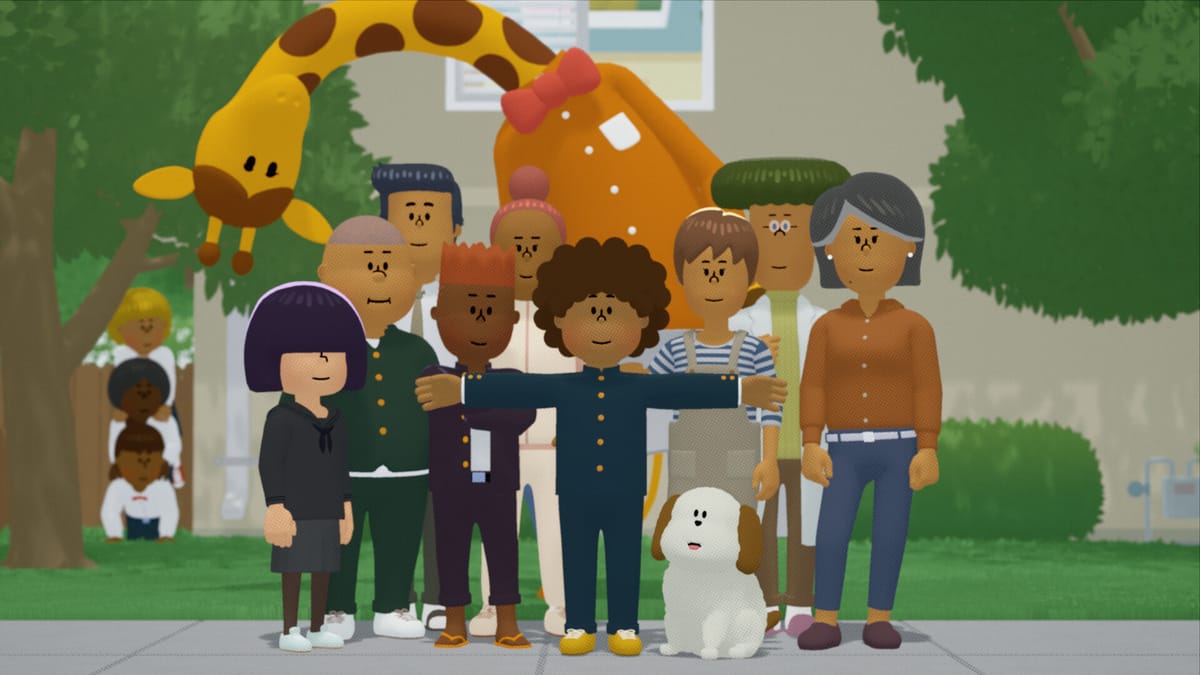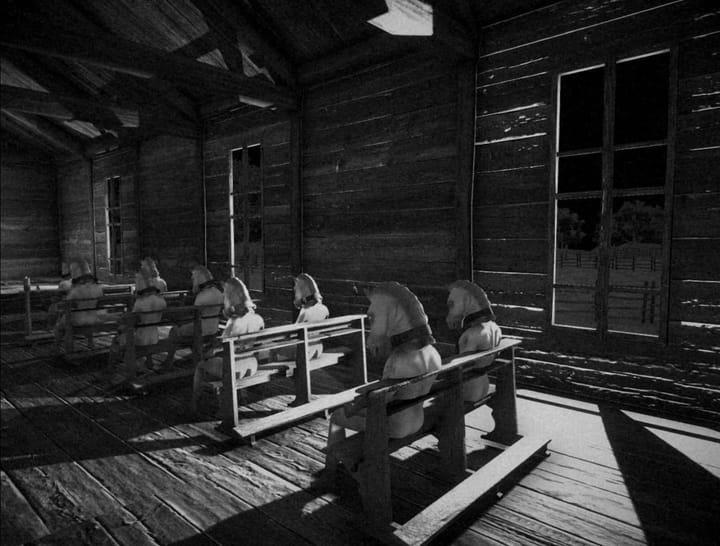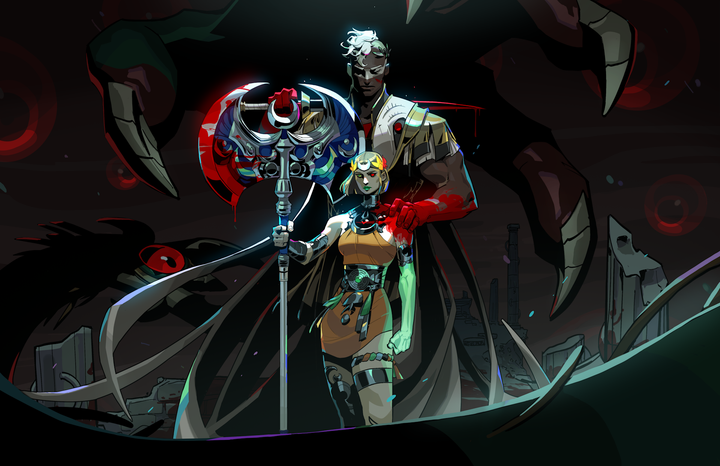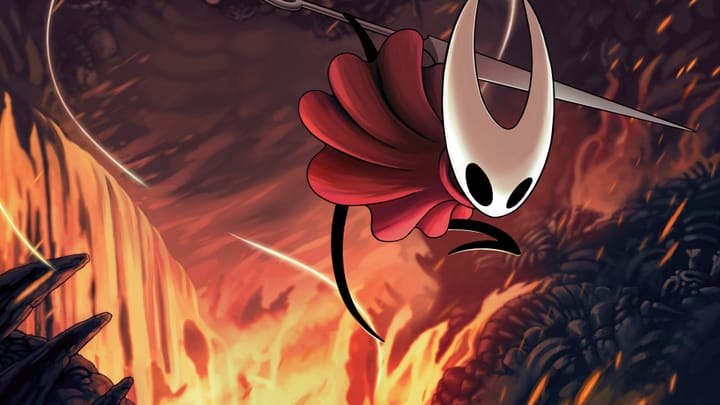to a T (Series X): An Admirable Failure from the Katamari Creator

Over the last couple of decades, game director Keita Takahashi has become one of the most interesting creatives in the medium. He's most famous for the superlative Katamari Damacy, though also cult delights such as Noby Noby Boy and Wattam, all whimsical and quirky experiences united by a signature aesthetic. His latest game, to a T, clearly fits in this lineage. However, previously, the games Takahashi directed stood out for their tactility — gameplay forward experiences where joy derives from interaction. Here, to a T doesn’t deliver, taking the form of a narrative game, rather than a gameplay first experience, and falters as a result.
You can’t talk about Takahashi’s previous games without engaging with what you do. Interaction is inherent to them, admittedly you could explain the narrative in isolation but to do so would be to not actually describe the game. to a T can only be described broadly and conceptually: it’s a game where you play as a teen who is stuck in a T pose. Admittedly, the word play is central to this description but only in a vague sense. Play is there because it is a video game but the idea of play isn’t central to the experience. Previous Takahashi directed games were built around a key gameplay loop that defines them, to a T doesn’t have this core. It is a new direction, and could work, but it actually just feels listless. The central narrative concept is at least entrancingly silly. There's missed potential, though, as being stuck a certain way opens up interactive possibilities but that just aren't harnessed. Rather than purely pushing the fantastical, the game is invested in treating the central conflict seriously and in operating as allegory. You as the teen have a service dog to help you and the first third of the game is built around the idea of existing in a world not designed for you. A brilliant concept and a resonant one, a lovely way of evoking difference and making the player consider divergent experiences.
This execution is uneven, though, to say the least. The lack of a consistent core means the game struggles to create a core message through interactivity and instead the experience exists as clumsy vignettes. It is certainly wise that it avoids becoming disability QWOP, it is just that playing the game is never interesting or appealing — nor does it convey anything. You go through the process on the first day of getting ready for school but each stage feels separated and half formed. The game lacks commitment, it puts forward this idea about living with difference but then doesn’t cohesively convey difference to the player. The right stick, when walking around, angles your T posing arms. But this only means anything when walking through some very specific doors, and then just feels like a broader impediment due to control and camera issues. The game is stuck between conveying difference and trying to give this broader message of difference not mattering, which all manifests in the broader issue of a lack of gameplay identity. There’s at least an attempt at narrative identity by adopting a televisual structure of eight episodes. It’s nicely packaged, with isolated arcs, and this approach does aid the broader storytelling. The TV episode style is also a fun aesthetic, each bookended with an opening and closing song. They are really good songs — and the repetition gives some cohesion — but they are deployed intrusively, more evidence to the game not really working out itself. The theme tune doesn’t always feel relevant as the story progresses (as it introduces the initial premise and that alone) and the closing song too often comes out of nowhere and the content never aligns with what is happening. Still, the episodic approach does give a much needed framework that gives the game some semblance of an anchor.
In these episodes, you mostly go through narrative moments — dialogue and cutscene heavy — but can also go round the town. Going round the town is awful. There’s a useless map and you are stuck with a fixed perspective camera as you transition between screens. There’s no sense of exploration and the dotted collectible coins all over the map — which you don’t need (you can spend them in cosmetics) – yet again speak to a lack of actual identity. They are there out of convention and don’t fit the style of game this is. Intermediary space is not a thing that is fun to be in, here, location merely exists as a pretty backdrop to traverse. Going through each screen is so awkward and a conventional, player controlled third person camera could really make the game so much less stilted. The town looks so great, you just can’t take advantage of this and are only really allowed the world on the game’s terms (completely nullifying the impact of the collectible aspect). Outside of this, you have rudimentary mini games that are uniformly bad. The controls don’t map to what you are doing in an interesting way and often feel obtrusive. Some running challenges feel either pointless or deeply frustrating due to the terrible camera. These are all just sporadic vignettes chucked in to keep it a game when its reality is closer to a digital comic book. There’s fun to be had from discovering the quirky characters of this world, with a handful of lovely moments, but this is not the norm.
Without coherent or compelling gameplay, we are left with story as the main event. All else is put to background, already less interesting as you do still spend a lot of time with lightly interactive — or just not very good — sequences that merely get in the way and that don’t convey identity (or contribute to anything the game is doing). It really lacks cohesion in this way. All would be forgiven if the story was good; alas, it isn’t. It’s a well meaning tale about celebration of difference but it is told haphazardly and ends up as incredibly shallow. It would work well as an accompaniment to mechanics that cemented its themes, it is subpar as the main event. There’s the invited disability allegory but there’s also a real mix of language around body image and disability throughout the game. This is where the dichotomy between the grounded and the fantastical becomes a problem. The focus on the real invokes optics and analogies that are unexplored, and are treated quite shallowly. The game is about experiencing a world not made for your needs, and about having a support animal. This is a very clear analogue to real experiences that could be a real forge for exploring wider experiences – and for empathy for many players. So much of the early concepts invite comparison to a realist experience of physical disability but – beyond the strained metaphor of our T Poser – there's no real representation, further ostracising the concept. In the end, the game isn’t about disability per se, in an evident and textual sense. Really it’s about exploring a silly premise with narrative sincerity as a way of pointing out the value of diversity. Very well meaning but arguably misarticulated. The game favours vague, one size fits all affirmations and is flawed for doing so. There’s dabbling with regressive disability as superpower rhetoric (or just an unintended inference of this) and the repeated refrain of ‘you are the perfect shape’ is a flattening claim. It is underpinned by empowerment and self belief but it isn’t cognisant of the very real issue of dysmorphia. We are not our shape, we are ourselves. For many people, there is a genuine juxtaposition and a need for physical change to actually feel like one’s self. Saying 'you’re perfect' in this agnostic way is well meaning but it’s incredibly surface level and treats a wider issue with silencing simplicity.
To become repetitive, this would be more forgivable if the game had a wider appeal. It does not. It’s a message game and a narrative game. The message is nice for young children and that’s completely valid — but the children of the age this is targeted at won’t be reading game reviews or analysis. It also just didn’t have to be one way or the other. Wattam and Noby Noby Boy — even Katamari — have simplistic moral cores that you could dissect to find a kind of lightly regressive naivety. But they sell their ideas through gameplay and become more resonant, and have a tactile appeal that will also speak across generations. Wattam's story is incredibly rote, a parable of forgiveness and the power of friendship over all – a beyond archetypal story of darkness versus light. However, at every point in the gameplay what you are doing is focused around these themes in a way that makes them integral. Wattam's gameplay has holding hands as a central feature, a core action, and the puzzle solving nature of that game is built around you making characters interact and finding synergies. In Wattam, working together is inherently fun and joyful and therefore playing the game deepens the shallow exposition. Truly, Takahashi's previous game are heartfelt toys as much as they are games, and are successfully so. to a T could be better, and could be narratively better, and still maintain the target audience. It’s also worth noting that, for all the talk of difference and the need to accommodate divergent experiences, the accessibility options in this game are woeful. There’s an accessibility menu and all it does is let you simplify spinning controls. There aren’t even wider quality of life options like the ability to uninvert camera controls or adjust brightness. The game controls awkwardly and does itself a disservice by doing so. Camera and level design issues create artificial restraints that are annoying and also textually counter intuitive.
On a fundamental level, though, to a T is just deficient as a video game. It doesn’t cohere or have an identity, sacrificing these for a narrative that isn’t well told and doesn’t hold up as a main focus. It’s terrifically disappointing, a chore to get through in a way that eats at the game’s undeniable charm. We have a new Katamari this year on iOS that feels like it should be on console — limited by its platform. Somewhat ironically, to a T is a console game that feels like it should just be a phone App, or a picture book for young children. The tactile joy of previous Takahashi games has gone, jettisoned on purpose but with nothing of substance left to fill the gap. There’s charm here, there’s character and there’s humour here; there just isn’t much of a game here.





Comments ()